- Quick Read
- Deep Read ( 5 Min. )
Monitor Daily Podcast
- Follow us:
- Apple Podcasts
- Spotify
- RSS Feed
- Download
TODAY’S INTRO
How Texas fits in a summer of US voting bills
Late Thursday night Republicans in the Texas House passed new voting restrictions after months of protests, and a 38-day walkout by Democratic colleagues.
The move ensures that Gov. Greg Abbott will soon sign the measure. It also caps a spring and summer where many state legislatures fought bitterly over electoral legislation sparked in part by former President Donald Trump’s false claims of fraud in the 2020 vote.
As Texas demonstrates, some big states controlled by Republicans have moved decisively toward tightening vote procedures. The Texas bill adds new ID requirements for voting by mail, gives more power to partisan poll watchers, and bans drive-thru and 24-hour voting, which were used in 2020 in Houston’s Harris County.
These changes could make voting more difficult in a state where turnout ranked 44th out of 50 in last year’s presidential election.
“It’s hard not to define those [laws] that make it harder to vote in a state that already has one of the lowest voter participation rates in the country as anything other than suppression,” Joshua Blank, research director at the Texas Politics Project at the University of Texas at Austin, told the Monitor’s Dwight Weingarten last month.
But the overall national effect of this year’s legislative changes may be more nuanced. At least 18 states have enacted 30 laws that restrict voting access, according to a report by the Brennan Center for Justice at New York University School of Law. However, at least 25 states have enacted 54 laws with provisions to expand voting access, according to the Brennan study.
Share this article
Link copied.

Help fund Monitor journalism for $11/ month
Already a subscriber? Login

Monitor journalism changes lives because we open that too-small box that most people think they live in. We believe news can and should expand a sense of identity and possibility beyond narrow conventional expectations.
Our work isn't possible without your support.
In Taliban’s Afghanistan, opportunity for Al Qaeda, ISIS
As it negotiated its exit from Afghanistan, the U.S. relied, in part, on Taliban pledges to curb terrorism. The Kabul attack underscores experts’ doubts about the militants’ abilities, and intentions.
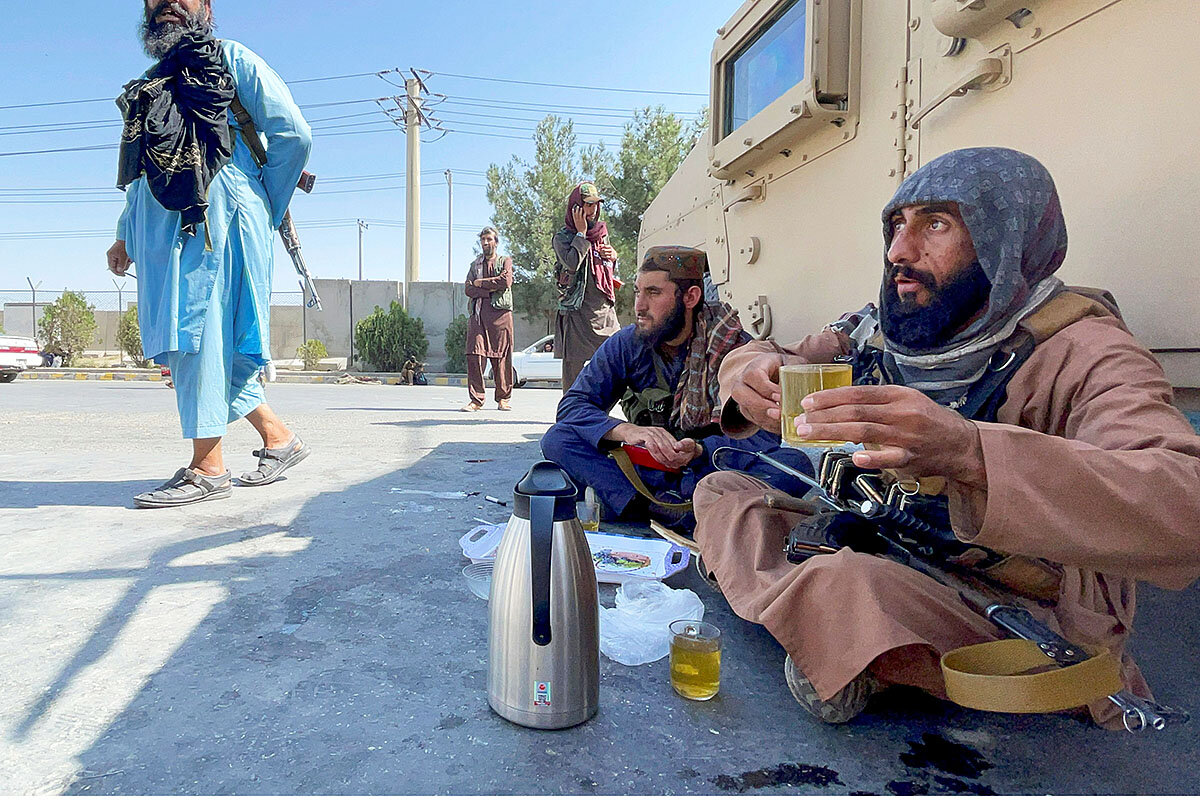
Back in power in Afghanistan, the Taliban are reiterating anti-terrorism pledges made 25 years ago, five years before 9/11. But with Taliban forces patrolling Kabul, a suicide bomber on Thursday inflicted the deadliest attack on U.S. troops in Afghanistan in a decade.
At a minimum, the attack underscores how the Taliban have failed to stop an Islamic State faction operating within Afghanistan’s borders from attacking U.S. targets, terrorism experts say. Moreover, they add, the Taliban’s factional divisions and differences between leadership and foot soldiers leave open the possibility that more radical Taliban elements could facilitate terror attacks.
“As the Taliban tries to consolidate power, it’s going to be tested,” says Nathan Sales, former State Department coordinator for counterterrorism. “The security vacuums that are going to develop ... will create opportunities for ISIS to thrive in Afghanistan.”
Meanwhile, experts stress that the Taliban maintain a close partnership with Al Qaeda as well as ties with many other Islamic extremist groups they are not inclined to expel.
“The group that harbored Al Qaeda ... which gave us 9/11, and refused to hand over bin Laden – they’re right now back where they were two decades ago,” Ambassador Sales says. “We should never trust the Taliban when American lives are at stake.”
In Taliban’s Afghanistan, opportunity for Al Qaeda, ISIS
Twenty-five years ago, when the Taliban first took power in Afghanistan, the militants held a press conference to declare their opposition to terrorism and spreading radical Islam.
“Regarding international terrorism, we are totally against that,” Mohammed Stanakzai, then deputy foreign minister of the Taliban’s provisional government, said in October 1996, vowing to “punish” any troublemakers, according to news accounts.
Yet five years later, Al Qaeda used its base and training camps in Afghanistan to help orchestrate the Sept. 11, 2001, attacks. Four civilian airliners were hijacked – two that felled the World Trade Center, a third that crashed into the Pentagon, and a fourth into a field in Pennsylvania. Nearly 3,000 people were killed, the deadliest terrorist attack in history.
Now the Taliban are back in power in Kabul, again pledging not to allow any group, including Al Qaeda, to use Afghan soil to threaten the security of the United States and its allies.
But on the Taliban’s watch, and with their forces patrolling Kabul, a suicide bomber on Thursday inflicted the biggest mass-casualty attack on U.S. troops in Afghanistan in a decade – and one of the heaviest losses of American lives in a single attack of the war. An Islamic State terrorist affiliate, ISIS-Khorasan, a “sworn enemy” of the Taliban, claimed responsibility.
Thirteen American service members, and according to reports Friday, a staggering 169 Afghans, were killed in the attack at Kabul airport. And there reportedly are warnings that more attacks in Kabul are possible.
At a minimum, the attack Thursday underscores how the Taliban have failed to stop a terrorist group operating within Afghanistan’s borders from attacking U.S. targets, terrorism experts say. Moreover, they add, the Taliban’s factional divisions and differences between leadership and foot soldiers leave open the possibility that more radical Taliban elements could facilitate terror attacks.
Security vacuums
“ISIS-Khorasan and the Taliban are ... sworn enemies ... but that doesn’t mean that the Taliban has the wherewithal to keep ISIS under control,” says Nathan Sales, former State Department coordinator for counterterrorism and a senior fellow at the Atlantic Council.
“As the Taliban tries to consolidate power, it’s going to be tested in its ability to provide security in the country,” he says. “The security vacuums that are going to develop under Taliban control will create opportunities for ISIS to thrive in Afghanistan.”
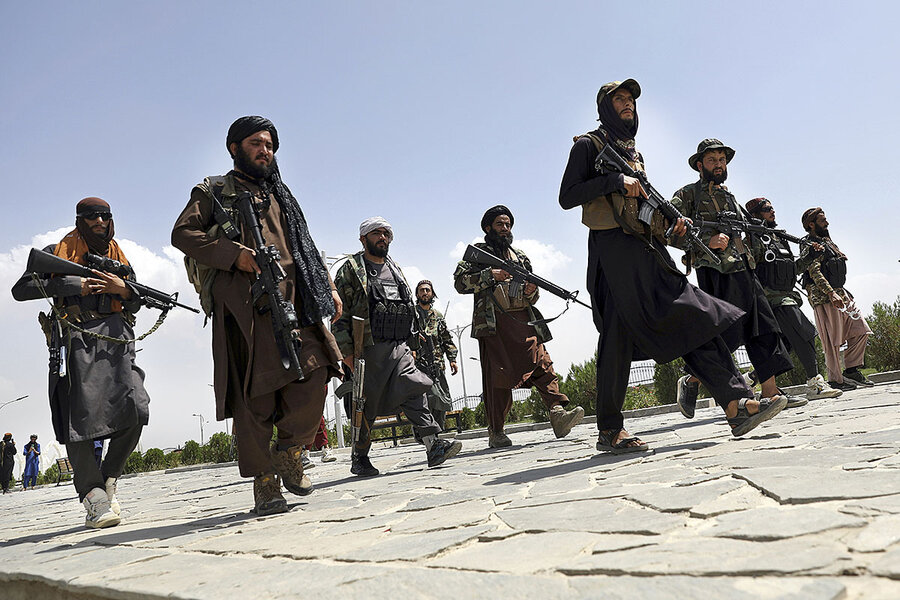
Meanwhile, the terrorism experts stress that the Taliban maintain a close partnership with Al Qaeda as well as ties with many other Islamic extremist groups they are not inclined to expel.
“We should never trust the Taliban when American lives are at stake,” Ambassador Sales says.
A case in point, he says: A Taliban spokesperson said in an interview broadcast Wednesday that there is “no proof” that Osama bin Laden was involved in the Sept. 11 attacks, despite documentation that the Al Qaeda leader, killed by Navy SEALs in Pakistan in 2011, plotted the strikes.
“The group that harbored Al Qaeda ... which gave us 9/11, and refused to hand over bin Laden – they’re right now back where they were two decades ago,” Ambassador Sales says. “The new Taliban is the same as the old Taliban.”
ISIS-K’s fingerprints
Experts said the attack Thursday bore the hallmarks of ISIS-K, which was founded in 2015 and headquartered in Afghanistan’s Khorasan province.
“It was low-tech, complex ... and makes the Taliban appear too weak to control their own territory,” says Douglas London, former CIA counterterrorism chief for South and southwest Asia. “They have been a particularly resilient organization because they have decentralized and have multiple small and independent cells,” he says.
President Joe Biden ordered the U.S. military to plan operations to hit ISIS-K “assets, leadership, and facilities” whenever and wherever the U.S. government chooses. “We will hunt you down and make you pay,” he said at a press conference Thursday.
Mr. Biden stressed that ISIS-K is “an archenemy of the Taliban,” and said there was no evidence of collusion between the two groups. The Taliban also condemned the attack. Yet while the Taliban have battled against ISIS-K for years and seek to crush it as a competing organization, experts say, they have so far failed to do so.
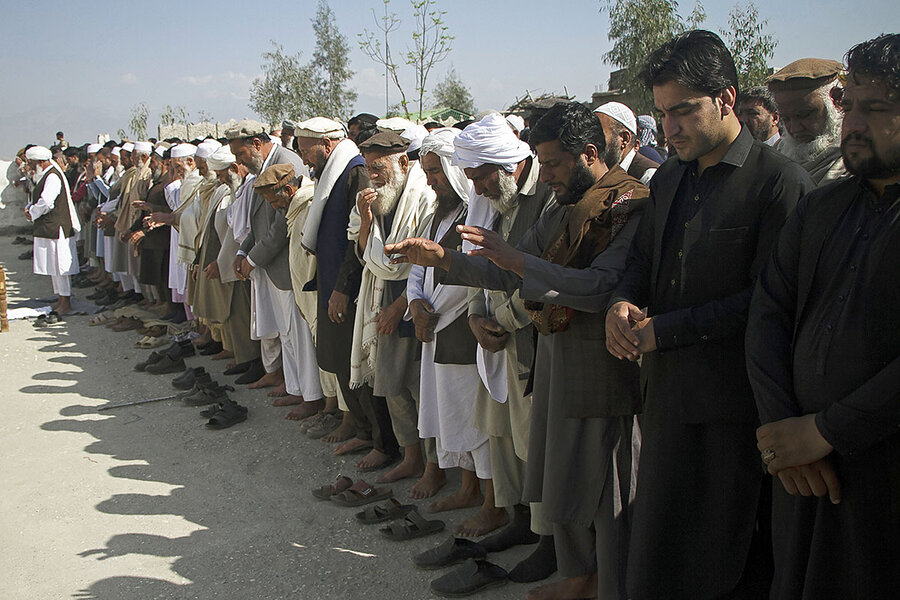
And while the Taliban oppose ISIS-K, they have long-standing, close ties with Al Qaeda and other terrorist groups present in Afghanistan that they have fought alongside and are highly unlikely to abandon, experts say.
More than a partner, “Al Qaeda is integrated into the Taliban, literally intermarried into the Taliban at all sorts of levels into the second generation of Al Qaeda kids” born in Afghanistan since the 1980s, says Mr. London. “The Taliban is not going to go after family members.”
Haqqani network
The Taliban have relied heavily on Al Qaeda for funding in the past, and continue to depend on it for expertise, including the training of the Taliban’s elite fighting elements, such as their “red units,” he says. While Al Qaeda’s presence in Afghanistan has dwindled, it has between several dozen and 500 fighters across about 15 provinces, according to a United Nations report in June.
“Large numbers of Al Qaeda fighters and other foreign extremist elements aligned with the Taliban are located in various parts of Afghanistan,” the report said.
“It is impossible to assess with confidence that the Taliban will live up to its commitment to suppress any future international threat emanating from Al Qaeda in Afghanistan,” it concluded, noting how “Al Qaeda and like-minded militants continue to celebrate developments in Afghanistan as a victory for the Taliban’s cause and thus for global radicalism.”
The Taliban group with the closest ties to Al Qaeda is the Haqqani network, considered the Taliban’s most combat-ready force, which has reportedly taken charge of security in Kabul. Some intelligence indicates tactical collaboration may exist based on personal ties between members of the Haqqani network and ISIS-K commanders, according to the U.N. report.
The Taliban’s takeover of Afghanistan escalates the risk of a resurgence of terrorist groups in the country, posing dangers to neighboring countries – including Pakistan – as well as to the rest of the world, experts say, especially in the wake of the U.S. military withdrawal.
That risk is one reason nations should not formally recognize the Taliban government, they say.
“The Taliban-Al Qaeda terrorist syndicate has returned to Kabul,” says Bradley Bowman, director of the Foundation for Defense of Democracies’ Center on Military and Political Power in Washington. “If you recognize the Taliban, you’re essentially recognizing Al Qaeda.”
Staff writer Howard LaFranchi contributed to this report.

To curb violence at home, Mexico sues gun-makers in US
There are many domestic factors underpinning Mexico’s high murder rate. But the government is arguing that U.S. gun-makers – and gun policy – play a part as well.

- Quick Read
- Deep Read ( 3 Min. )
Homicide rates have been trending up in Mexico over the past 15 years, with a record of just under 36,000 people killed across the country in 2018 alone. The growth of organized crime, turf wars, and high rates of impunity all play a role.
However, the Mexican government is trying to tamp down on another factor: gun manufacturers in the United States, whose firearms are brought across the border. Earlier this month, Mexico filed a lawsuit in Massachusetts federal court against 10 U.S. gun companies.
“For years the Mexican government has been saying the U.S. should do more about guns, but most of the time it’s in response to pressure from the U.S. to stop the drug trade into the U.S.,” says Carlos Pérez Ricart, a Mexico City-based researcher. With this lawsuit, “Mexico is going on the offensive.”
The lawsuit is about more than any long-shot legal wins – it’s about indirectly pressuring the U.S government. Success at the border, Dr. Pérez Ricart says, whether concerning the drug trade, human trafficking, or now arms flows, will require the two neighbors to cooperate, and share responsibility.
To curb violence at home, Mexico sues gun-makers in US

For the past 15 years, violence has been on the rise in Mexico due to the growth of organized crime, turf wars, and high rates of impunity. But the Mexican government in August acted to curb another potential factor in the country’s high death toll: It filed suit against a handful of U.S.-based gun manufacturers for their role in the steady flow of arms that cross the border into Mexico each year.
What’s the lawsuit about?
The Mexican government filed a lawsuit on Aug. 4 in Massachusetts federal court against 10 U.S. gun companies, saying they are deliberately enabling the flow of weapons to Mexican cartels. Homicide rates have been trending up in Mexico over the past 15 years, with a record of just under 36,000 people killed across the country in 2018 alone. The suit points to business decisions among U.S. gun-makers that seem specifically designed to appeal to Mexican consumers, such as using branding rooted in Mexican history or popular culture, like a .38-caliber pistol engraved with the face of revolutionary Emiliano Zapata.
About 70% of guns traced in Mexico by the U.S. Bureau of Alcohol, Tobacco, Firearms, and Explosives between 2014 and 2018 came from the United States.
“These weapons are intimately linked to the violence that Mexico is living through today,” said Foreign Minister Marcelo Ebrard in announcing the suit.
How are U.S. guns getting into Mexican hands?
Mexico has strict laws around gun sales for private use: There’s only one authorized gun store in the entire country.
Mexican trafficking organizations have turned to U.S. citizens for help in acquiring their illegal arms. Americans without criminal records buy several guns at different locations or gun shows in the U.S., and then drive them across the border.
Mexico has put pressure on the U.S. over this in the past, but it’s typically come as an argument when the country is on the defensive, says Carlos Pérez Ricart, a professor of international relations who focuses on arms trafficking and organized crime at the Center for Research and Teaching in Economics in Mexico City.
“For years the Mexican government has been saying the U.S. should do more about guns, but most of the time it’s in response to pressure from the U.S. to stop the drug trade into the U.S.,” he says.
With this lawsuit, “Mexico is going on the offensive.”
The shared border means U.S. gun laws have a direct impact on Mexico, experts say. The 2004 end of an assault weapon ban in the U.S., for example, is seen as a turning point for Mexico’s homicide rate, which spiked soon after, especially in border towns.
“The Mexican government is responsible for the rampant crime and corruption within their own borders,” Lawrence G. Keane, senior vice president of the National Shooting Sports Foundation, said in a statement reacting to the lawsuit.
Mexico’s impunity rates for murder, which hover around 90%, and widespread corruption at all levels of government play a proven role in the vast presence of violence and crime here.
But there’s “a bigger picture to consider,” says Dr. Pérez Ricart.
“We are neighbors with the most powerful country in the world,” he says, “and it happens that this country is producing millions of weapons every year and selling them without regulation.”
Could this lawsuit change things?
This is the first time a national government has sued gun-makers in the U.S., and many observers believe the political impact could be greater than any legal outcome. Government officials said they’re seeking $10 billion from gun manufacturers, which would normally be blocked by a U.S. federal law that shields gun manufacturers from being sued by victims of gun violence. But the argument that gun-makers are knowingly trying to sell to an illegal market would circumvent that law.
It’s still a long shot, and legal experts are skeptical the case will go far. But if more suits follow, it could offer a new means to pressure U.S. gun-makers – and indirectly, the U.S. government.
It’s taken years for Mexico to convince the U.S. that drug and human trafficking are its charge too, says Dr. Pérez Ricart. “It’s a good idea to try and move the discussion to include U.S. responsibility, as well.”

On Menorca, locals push sustainable tourism to save a critical species
The island of Menorca is a rare success in sustainable tourism. But the threat to Posidonia oceanica, known as the “lungs of the Mediterranean,” shows that there is still work to be done.
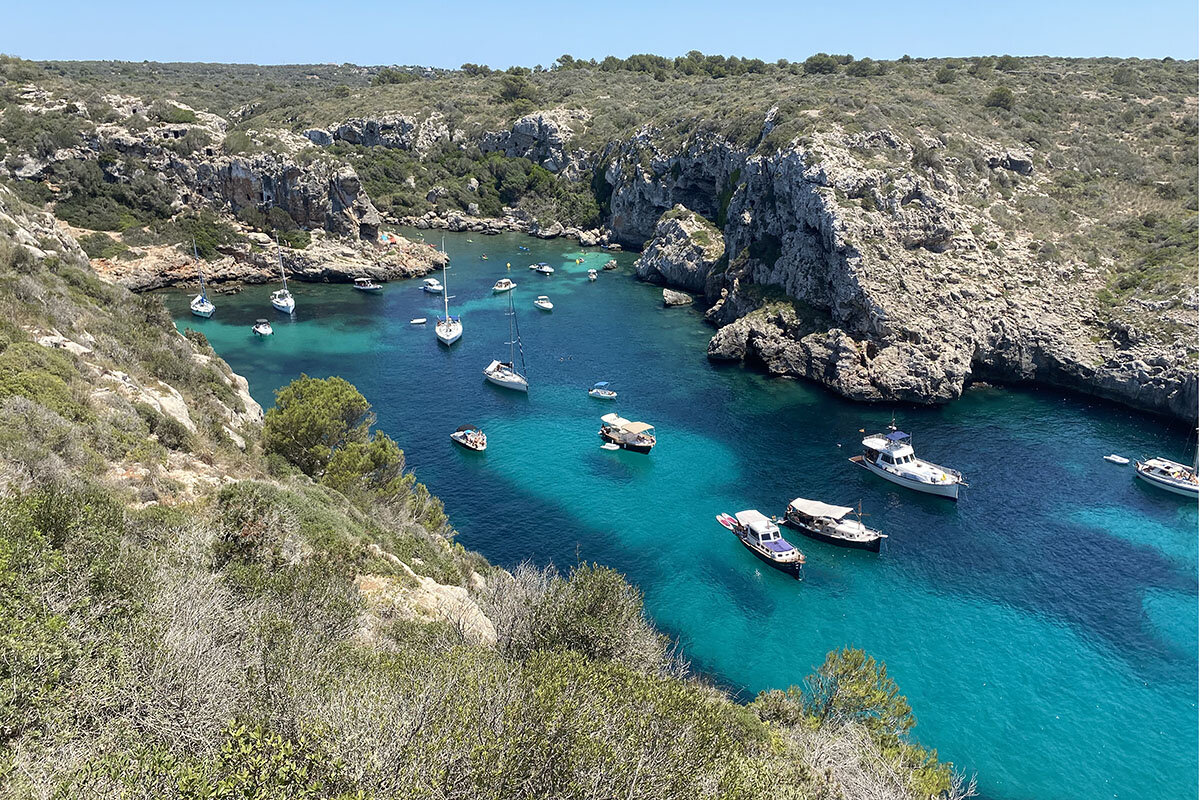
- Quick Read
- Deep Read ( 6 Min. )
The ribbon-like Posidonia oceanica seagrass, which lives underwater in expansive meadows, is known to some as the “lungs of the Mediterranean.” Occupying around 250 square miles in Spain's Balearic Islands alone, the plant is as important in the fight against climate change as it is for the local ecosystem. But it is disappearing at the alarming rate of 5% per year.
One of the Balearics, Menorca, has earned a reputation for its sustainable model of tourism, in many cases having prioritized environmental protectionism over tourist development. But as tourism has grown in recent decades, and Posidonia meadows continue to shrink, the island is facing a new and serious challenge.
Menorcans are working to solve the problem by digging deep into the values that have made the island the oasis it is today: respect, balance, and care for the island as a whole.
“High quality tourism is tourism that understands and values what and who we are,” says local official Isaac Olives Vidal. “This is the most important thing: that the people who come to your house, or to Menorca, or to any other place, value what you are, what you have, and that they respect it.”
On Menorca, locals push sustainable tourism to save a critical species
When the yacht lowers its anchor into the sea off the Spanish island of Menorca, nine-year-old Nubia Manzanares, playing on a nearby dock with neighbors, immediately notices the ecological blunder and leaps into action.
The untrained eye wouldn’t notice anything wrong. But Nubia, who has snorkeled in these waters her whole life, knows immediately that the ship has anchored itself directly on top of a meadow of Posidonia oceanica, a seagrass most tourists have never heard of. The anchor will damage the precious plant and likely tear it out of the earth when it goes to leave.
She grabs her paddleboard and oar and sets out to warn the boat that it is parked illegally. (She brings her uncle along as well, just in case the boater doesn’t react kindly.)
Nubia is one of many Menorcans who are doing everything they know how to protect the ribbon-like Posidonia, which lives underwater in expansive meadows, known to some as the “lungs of the Mediterranean.” Occupying around 250 square miles in the Balearic Islands alone, the plant is as important in the fight against climate change as it is for the local ecosystem. But it is disappearing at the alarming rate of 5% per year.

Menorca has earned a reputation for its sustainable model of tourism, in many cases having prioritized environmental protectionism over tourist development. But as tourism has grown in recent decades, and Posidonia meadows continue to shrink, the island is facing a new and serious challenge. Menorcans are working to solve the problem by digging deep into the values that have made the island the oasis it is today: respect, balance, and well-informed care for the island as a whole.
“High quality tourism is tourism that understands and values what and who we are,” says Isaac Olives Vidal, director of sustainable projects for the Consell Insular, a local government body. “This is the most important thing: that the people who come to your house, or to Menorca, or to any other place, value what you are, what you have, and that they respect it.”
An ecologically minded island
Posidonia is found all around coastlines of the Balearic Islands, an archipelago off the Spanish coast that includes popular tourist destinations Ibiza and Mallorca, as well as the smaller and more pristine Menorca. Posidonia meadows soak up five times more carbon dioxide each year than a similarly sized segment of the Amazon rainforest and are a major producer of the region’s oxygen.
The seagrass also acts as a powerful water filtration system, provides a habitat for 20% of the Mediterranean’s species, protects coastlines from erosion, and is responsible for around 85% of the island’s sand formation. Without Posidonia, locals are quick to note, there would be no crystalline waters or white sand beaches for tourists to visit.
Some scientists estimate that nearly 30% of the Mediterranean’s Posidonia has already disappeared, due to damage from boat anchors, eutrophication (excessive accumulation of nutrients), and construction projects. Because the plant grows back at the slow rate of less than half an inch each year, and replanting Posidonia is difficult and costly, protection is key.
Saving what is left of the Posidonia won’t be easy for Menorca, an island whose economy depends fundamentally on tourism.
But tourism came relatively late to Menorca as compared with Mallorca and Ibiza, which islanders say is thanks to dictator Francisco Franco’s decision not to invest in the small island following the Spanish Civil War (1936-1939).
They say he wanted to punish Menorca for being a stronghold of the opposition. Yet that gave islanders time to observe the dangers of intense coastal development and mass tourism on the other Balearic Islands.
“In general, the people of Menorca are much more conservationist,” says Victor Carretero, a marine technician at the Balearic Ornithological Group (GOB) Menorca, an environmental organization that grew out of demonstrations against plans for urban development in the 1970s. “They want to protect the island because they know that what makes the island attractive is that conscientiousness.”
“I give them another vision”
For Nubia’s mother, Rocio Manzanares, protecting the Posidonia is a matter of respect.
When her two daughters were younger, they sometimes complained about the seagrass – even the most ardent Posidonia devotees admit that the plant stinks when washed up on the beach. So Ms. Manzanares modeled the reverence she knows the plant deserves.
“Well, I love the Posidonia,” she would respond excitedly to her children, telling stories about the many ways the plant protects the island – things she learned from GOB Menorca. “When kids say it’s gross, I give them another vision,” she says.
But in the past two decades, she’s noticed that the tourists who come to the island don’t treat the beaches or the ocean with the same respect her daughters now do.
Legislation has led to some progress. In 2018, the regional government of the Balearic Islands passed the Posidonia Decree, which prohibits anchoring ships above the Posidonia and regulates the removal of washed-up Posidonia from the shores of beaches. Tourists don’t like the smell, but the Posidonia remains are essential for sand formation.

Local environmentalists and the city government of Mahón, the Menorcan capital, are pushing the Balearic government to add a tertiary treatment on wastewater before it is released into the ocean to prevent eutrophication-induced algae blooms, which block oxygen from reaching the Posidonia.
Some Menorcans are concerned that the government isn’t doing enough – evidenced by the fact that boaters who anchor in the Posidonia are often not fined due to a lack of monitoring.
“The real political interest is nautical tourism,” says Pep Escrivà, a firefighter who wrote a proposal to formally protect specific regions of the island from motorized boats. The proposal, which he thinks can reduce pressure on the Posidonia, is just beginning to gain traction. “[Politicians are] scared that if they pressure the boat renters, they won’t have as much business. But that’s the wrong way of seeing things. Because if you protect the natural world, you create space for another type of tourist.”
Finding ways to do more
Menorcans say that the key to protecting the Posidonia is simple, but not easy: education.
“It’s important to give resources,” says Marina de la Mora, a tourist from the north of Spain who has visited Menorca in the past but only learned about the Posidonia this year. She believes most tourists are actually interested in doing the right thing. “Based on the information I have, I do what I can. But I could definitely do more, if things were more clear from above and they told me what is needed.’”
The island has had some success with booklets about Posidonia that hotels can distribute to tourists. Information pamphlets can be found at boat rental agencies and tourist information centers, and a mobile app lets boaters know if they are safe to anchor.
As a way to deepen that understanding of local values, and to remove some of the pressure on the island’s waters, the government of Mahón is working to foster cultural tourism by highlighting opportunities for birdwatching, gastronomy, horse trails, prehistoric megalithic monuments, and local museums.
“For us in city government, the most fundamental thing [for a balanced tourism sector] is that the visitor who spends time here is the type of person who strives to get to know Menorca’s values, who wants to understand the culture as well as the environment,” says Conxa Juanola, the deputy mayor for culture and environment.
There is still work to be done. In the meantime, Menorcans like Nubia will keep doing what they can to educate locals and tourists alike about the treasured seagrass.
In fact, Nubia and her uncle need only paddle a few yards into the bay when the yacht begins to pull up its anchor and move away from the Posidonia. Another neighbor, paddling from the other side of the bay, had gotten to the boat first.

Film
‘On Broadway’ filmmaker explores the pull of the stage
When Broadway reopens this fall, it won’t be the first time it’s staged a comeback. The new documentary “On Broadway” explores the resiliency of the theater – and why it matters in people’s lives today.

-
By Peter Rainer Special correspondent
‘On Broadway’ filmmaker explores the pull of the stage
“Without the theater, New York would somehow not be itself.” So says Ian McKellen at the start of the documentary “On Broadway.” Most of us who love the Great White Way, even those who might only have traveled there in their imaginations, would be hard-pressed to disagree.
The film is essentially about the seesawing fortunes of Broadway from the disastrous 1969-1972 era right up until just before the pandemic hit. The 2018-19 season, with around 15 million ticket buyers, was the most commercially successful in Broadway history. By the next year, COVID-19 had shut down all 41 theaters.
Directed by Oren Jacoby and largely assembled pre-pandemic, the film closes by briefly noting that the famed theater district reopens this September. Jacoby’s pitch is clear: Broadway has weathered near-collapse before, and will do so again.
Especially for those unfamiliar with the magnitude of Broadway’s prior travails, the documentary – which contains extensive archival footage – will be something of an eye-opener. During the four years beginning in 1969, attendance dropped from 10 million to an all-time low of 4.8 million. A big reason for this calamity was the fall of the Broadway district itself: 42nd Street was thronged with prostitutes, sex shops, and drug dealers. Cleaning up the area was key to revitalizing theatergoing, but the painstaking process dragged on for years. Federal funding via then-President Gerald Ford for the near-bankrupt city was denied, as enshrined in the famous 1975 New York Daily News headline: “Ford to city: Drop dead.”

And yet, Broadway in that pre-AIDS era did manage to revive, in no small part by offering up shows that were first developed off-Broadway, most famously “A Chorus Line,” which transferred from Joseph Papp’s Public Theater. Not only did it prove to be a Broadway smash, but it also provided Papp’s nonprofit company with a windfall he reportedly described as “the GDP of a small country.”
Although the documentary doesn’t mention it, this repertory theater-to-Broadway trajectory somewhat mirrored what was occurring in Hollywood at the same time, as studio moguls – realizing their big expensive productions were not connecting with mass audiences – opened their doors, at least for a time, to younger, edgier filmmakers. (It was easier to take creative chances when the financial stakes weren’t so high.)
Even established theatrical veterans like Stephen Sondheim benefited; his great “Sunday in the Park With George,” for example, originated off-Broadway at Playwrights Horizons. And the plays of the late August Wilson – who is briefly interviewed, as is his longtime director, the late Lloyd Richards – were largely developed at the Yale Repertory Theatre. “Angels in America” was generated off-Broadway. Not to mention, in our own time, “Hamilton.” (A great clip shows Lin-Manuel Miranda performing a rap number about the Founding Father for the Obamas in the White House before the idea for a full-fledged musical took hold.)
Jacoby is basically a celebrant of Broadway, and his film can get gushy. But even though it’s replete with talking heads, who would object to hearing from the likes of McKellen, John Lithgow, the late Hal Prince, or Helen Mirren (who admits a nostalgia for the seediness of the pre-renovated Broadway)? We see clips from the famous “I love New York” campaign, which was linked to Broadway’s revival. My favorite moment: Frank Langella, caped as Dracula, tells us, “I love New York. Especially ... in the evening.”
Jacoby doesn’t avoid examining the push-pull between art and commerce that has in some ways turned Broadway into more of a touristy amusement park than a hallowed theater haven. The empty blockbuster musicals and revivals, the overabundance of British imports, the preponderance of movie star casting, the sky-high ticket prices – all these and more are duly noted.
But despite all the glitz and money talk, what the film unequivocally conveys is the elemental reason we are drawn to the theater in the first place. The famed director George C. Wolfe describes it best as “that wonderful fragile feeling of a human being standing center stage and opening their heart and inviting me inside.”
Peter Rainer is the Monitor’s film critic. “On Broadway” is unrated and is available in theaters.
Other headline stories we’re watching
(Get live updates throughout the day.)The Monitor's View
The power of the Afghan people
- Quick Read
- Deep Read ( 2 Min. )
-
By the Monitor's Editorial Board
In the past six years, deaths from terrorist attacks have declined. That fact, however, can hardly be a salve for the sorrow from Thursday’s suicide attack in Kabul. The high death toll has instead led to calls for retaliation against the local branch of the Islamic State group that claimed responsibility for the attack. Yet in this tragedy, as in similar attacks of recent years, lies an insight on why terrorist killings are falling.
The Taliban that now control most of Afghanistan do not get along with the group called Islamic State Khorasan. The two differ in tactics, goals, and ideology. As a result, they not only compete directly against each other; they also compete for the support of Afghan civilians. The widespread disgust among Afghans over the Kabul airport attack will not be lost on Taliban leaders. They might decide to lessen their own savage violence.
This would not be new in the recent history of jihadi terror. Muslim societies often silently oppose violence they see as opposite to Islamic teachings. The world has only begun to adopt a patient expectation that evil acts can create their own undoing.
The power of the Afghan people
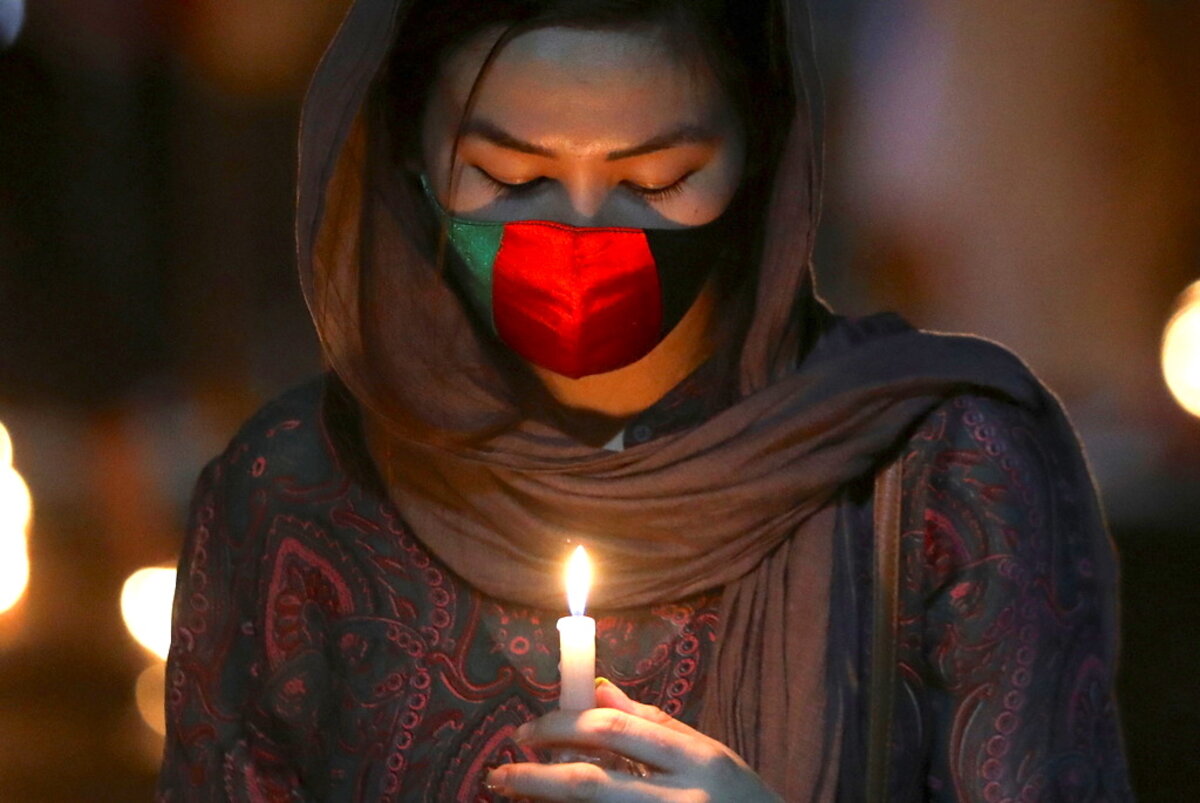
In the past six years, deaths from terrorist attacks have declined year by year. That fact, however, can hardly be a salve for the current sorrow and fear from Thursday’s suicide attack in Kabul. The high death toll of Afghan civilians and U.S. service members has instead led to calls for retaliation by the United States against the local branch of the Islamic State group that claimed responsibility for the attack . Yet in this tragedy, as in similar attacks of recent years, lies an insight on why terrorist killings are falling.
The Taliban that now control most of Afghanistan do not get along with the group called Islamic State Khorasan. The two differ in tactics, goals, and ideology. As a result, they not only compete directly against each other; they also compete for the support of Afghan civilians. Even within the Taliban are factions that often tangle. The widespread disgust among Afghans over the Kabul airport attack will not be lost on Taliban leaders. They might decide to lessen their own savage violence.
This would not be new in the recent history of jihadi terror. Muslim societies often silently withdraw or openly oppose violence they see as opposite to Islamic teachings. Al Qaeda in Iraq, for example, lost popular support after a series of beheadings of civilians. Within Al Qaeda itself, top leaders were divided over such tactics.
After the Islamic State took over parts of Syria and Iraq in 2014, it began to lose internal support because of its inhumane killings. When the Iraqi military and Western forces attacked in 2017, the victory was made easier by the errors of the militant caliphate and the loss of civilian backing.
Groups that conduct cruelty toward civilians contain the seeds of their own demise. Even in Iran, a country known as an exporter of terror, the people have power to soften a regime’s ruthlessness. On Tuesday, the head of the notorious Evin prison in Tehran had to apologize for the brutal treatment of prisoners. A video had been released showing guards beating and dragging inmates, many of whom are political prisoners. It created popular outrage in Iran. An official probe of the incident has been ordered.
“Regarding the pictures from Evin prison, I accept responsibility for such unacceptable behavior and pledge to try to prevent any repeat of these bitter events and to deal seriously with the wrongdoers,” the prison chief posted on Twitter.
The world has only begun to adopt a patient expectation that evil acts can create their own undoing. As an old Arab saying goes, “Leave evil and it will leave you.”

A Christian Science Perspective
Each weekday, the Monitor includes one clearly labeled religious article offering spiritual insight on contemporary issues, including the news. The publication – in its various forms – is produced for anyone who cares about the progress of the human endeavor around the world and seeks news reported with compassion, intelligence, and an essentially constructive lens. For many, that caring has religious roots. For many, it does not. The Monitor has always embraced both audiences. The Monitor is owned by a church – The First Church of Christ, Scientist, in Boston – whose founder was concerned with both the state of the world and the quality of available news.
Breathe free
- Quick Read
- Read or Listen ( 1 Min. )
-
By Cheryl Ranson
Nothing can stop the limitless flow of inspiration and peace from God, the divine Love that forever “encircles you and me,” as this poem conveys.
Breathe free
No gasp
for
breath –
we’re
God-inspired.
His rhythm’s
easy,
unexpired –
intake/
outflow
Soul-controlled,
Spirit-
moved.
No check
or hold
cuts off
supply of
peace of mind.
Our life’s unlabored,
unconfined.
Each conscious
thought
is cadenced –
free
for Love
encircles
you
and me,
for good.
Originally published on sentinel.christianscience.com, June 25, 2021.

A message of love
Reunited

A look ahead
That’s it for the news. Come back Monday, when we’ll have a story on efforts to save the iconic Louisiana longleaf pine.




